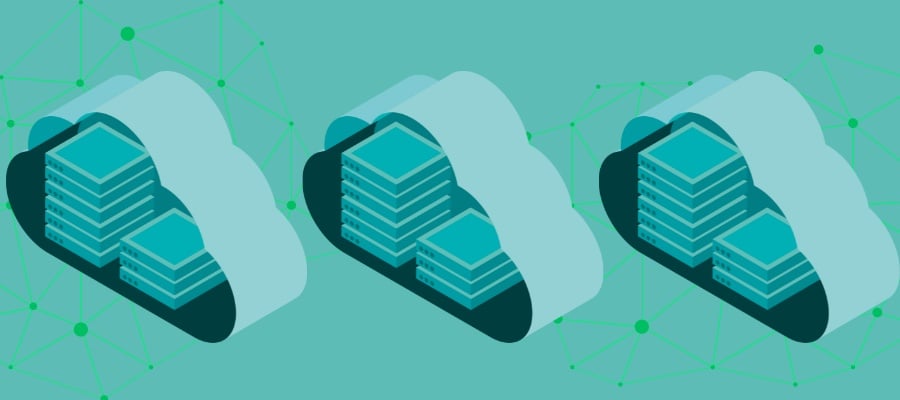/Sustainable%20IT%20goals%20to%20aspire%20to%20in%202024.jpg)
Sustainable IT goals to aspire to in 2024

Kani Talabani
5 strategies to drive sustainable IT goals
Explore five green and impactful strategies for technology leaders to drive sustainable IT goals within their teams.
In a world driven by technological advancements, the responsibility falls on the shoulders of technology leaders to champion sustainable IT goals within their teams.
Every year more than 272 million new laptops are manufactured. And every day 160, 000 “old” laptops are disposed of in the EU alone. The result is excessive resource consumption, climate change, pollution and e-waste.
However, the challenge extends beyond mere statistics, urging organisations to actively engage in sustainable IT programs and initiatives. In previous HotTopics roundtable debates, leaders within the HotTopics’ executive community explored sustainability in the C-suite.
These discussions delved into the critical relationship between IT teams and sustainability, the integration of sustainable technologies and culture and the strategic implementation of change through ESG priorities. Uncover five effective strategies from across the HotTopics community that can help reshape your approach and contribute to a more sustainable future.
Sustainable IT goals: An overview 🌱
- Sustainable IT goals 101: recycle your equipment
- Adopt cloud services
- Get rid of unnecessary data
- Implement green computing practices
- Start carbon accounting

Sustainable IT goals 101: Recycle your equipment
The average life expectancy for a laptop is five years—if you’re lucky that extends to 12.
The lifecycle of electronic equipment plays a big role in the environmental predicaments that currently confront us. Data from Circular Computing underscores the need to tackle this problem head on, and a key sustainable IT tactic lies in recycling your organisation's gadgets.
According to the World Health Organisation, “E-waste is the fastest growing solid waste stream in the world”. Back in 2019, they recorded an estimated 53.6 million tonnes of e-waste being produced globally, with only 17 percent documented as properly processed and recycled.
Nowadays there are numerous companies specialising in the reprocessing of electronic devices, ensuring the salvage and reuse of precious materials alongside through responsible elimination of hazardous waste.
This also extends to batteries, cables and additional peripherals. By introducing a recycling initiative, technology leaders can cut down on their organisation’s e-waste, diminish the consumption of resources and cultivate a team culture of environmental accountability.
Adopt cloud services
Traditional on-premise data centres are notorious for their energy consumption and overall environmental impact.
Adopting cloud practices is a key sustainable IT goal. Cloud services offer scalability—reducing the need for organisations to maintain expansive physical infrastructure. This not only optimises resource usage but also minimises energy consumption and carbon emissions associated with running and cooling data centres.
In a Studio roundtable debate on “Adopting Cloud Operating Model Principles”, senior technology leaders from Cisco, Cancer Research and Wrench Group mentioned the appeal of flexible linear scalability, bringing cloud capabilities to customers.
Moreover, cloud providers often have robust sustainability initiatives. Choosing eco-friendly cloud providers can significantly enhance your organisation's green credentials. By migrating to the cloud, you not only streamline your operations but also align your sustainable IT practices with a more sustainable future.
Get rid of unnecessary data
Data storage is a fundamental aspect of IT operations, but it comes at a cost—both economically and environmentally.
Storing unnecessary data not only burdens your organisation financially but also increases energy consumption for data storage and retrieval. Implementing data minimisation practices is crucial for sustainable IT.
Encourage your teams to regularly assess and declutter databases, deleting files and archives. Adopting data compression and deduplication techniques can further optimise storage space. By embracing a leaner approach to data management, your organisation not only reduces its environmental impact but also enhances operational efficiency.
Implement green computing practices
Speaking on the concept of the circular economy in a Studio roundtable debate Cisco’s Chief Sustainability Office Technology & Data Lead, Colin Seward, explained that to achieve the vision of a circular economy it would take a series of system and culture challenges.
What exactly do these changes entail? We have briefly touched upon the idea that organisations should start by recycling their unwanted electronic devices in an environmentally responsible manner, but what more can leaders be doing to instil this culture of sustainability?
Here are a few simple changes and green computing practices you can begin to implement today to help achieve a greener working environment:
- Start using green and renewable energy
- Switch to smart technology
- Go paperless or use recycled paper
- Lower your digital impact
- Encourage remote and hybrid work
Start carbon accounting
Understanding and mitigating the carbon footprint of your IT operations is crucial for effective sustainable IT management.
Carbon accounting involves measuring and analysing the greenhouse gas emissions associated with your organisation's activities. By quantifying your carbon footprint, you gain insights into areas where improvements can be made.
Invest in tools and software that keep track of carbon accounting for your IT infrastructure. Regularly assess and report on the environmental impact of your operations. This not only provides transparency but also allows your organisation to set meaningful sustainable IT goals and track progress over time.
Explore our carefully curated selection of roundtable articles and thought leadership content on sustainable IT and ESG.
SUBMIT A COMMENT
RELATED ARTICLES
Join the community
To join the HotTopics Community and gain access to our exclusive content, events and networking opportunities simply fill in the form below.